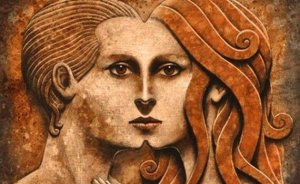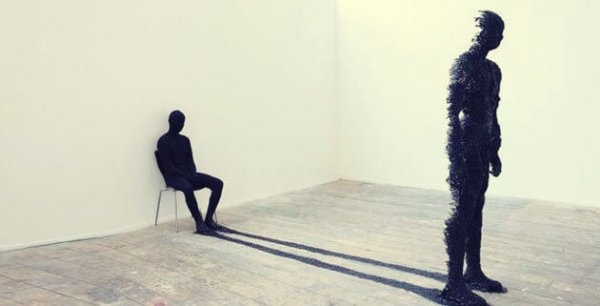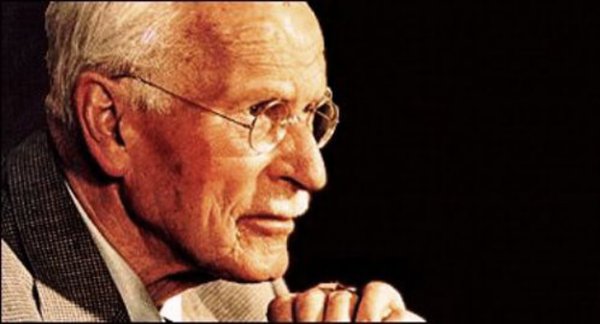The Shadow Archetype - The Dark Side of Your Psyche


Written and verified by the psychologist Gema Sánchez Cuevas
According to Carl Jung’s analytic psychology, the shadow archetype represents “the dark side” of your personality. It is a tumultuous sub-world of the psyche where you store the most primitive part of yourself.
The selfishness, the repressed instincts, and the “unauthorized” self that your conscious mind rejects. This is the part that is buried in the deepest recesses of your being.
You’ve probably heard of this concept before. The idea of the shadow archetype is a familiar one, and psychologists still use it to talk about confrontation. It refers to that sensation of internal conflict that you experience sometimes when you are frustrated, scared, insecure, or angry.
“One does not become enlightened by imagining figures of light, but by making the darkness conscious.”
-Carl Jung-
However, don’t forget that the idea that Jung formulated through his work on archetypes was already historically and culturally present in our society. The concept of a shadow or dark side is a common duality.
It even inspired Robert Louis Stevenson to write his classic novel Dr. Jekyll and Mr. Hyde. Stevenson, of course, wrote that novel well before Jung developed his theory about the shadow archetype.
Everything that your education and the moral norms of society tell you is “bad,” forms part of your shadow. However, it isn’t good to see these internal dynamics as reprehensible or dangerous. That kind of thinking could lead you to believe you have your own “Hyde” inside, trying to get out.
Jung himself explained that there are different types of shadows. He said that one way to achieve well-being, healing, and personal freedom is to confront them and be aware of them.

The shadow archetype – the dark side of human beings
The shadow archetype is closely related to Freud’s concept of the subconscious. However, it has unique aspects that significantly differentiate it from that idea. These unique aspects also enrich Jung’s concept.
Don’t forget that the intellectual romance between Freud and Jung eventually cooled considerably. So much so that Jung called the father of psychoanalysis a “tragic figure, a great man… but I cannot agree with his therapeutic methods.”
Jung developed his own method – analytic psychology. He rejected the couch and the asymmetrical relationship between therapist and patient. Jung favored therapy based on conversation.
He believed therapy should delve into the structure of the psyche and the unconscious where the archetypes dwell. Of all the archetypes, the one with the most therapeutic value was undoubtedly the shadow archetype. Let’s learn about the characteristics of this archetype…
The shadow, a known but repressed presence
- The “shadow” was a term that Jung borrowed from Friedrich Nietzsche.
- This idea represents the hidden personality that every human has. On the outside, most of us appear (and believe ourselves to be) good and kind people. However, there are parts of us that are repressed. These are inherited instincts that violence, anger, and hate sometimes hide.
- The shadow archetype doesn’t exist only in individuals. Groups of people (sects, religious groups, political parties) can also have a shadow archetype. These groups can, at any given moment, show their dark side to justify violent acts against humanity.
- The more we repress the shadow, the more destructive, insidious, and dangerous it becomes. According to Jung, when we repress it, it can “project” itself and appear in the form of neurosis or psychosis.
- Likewise, Jung identified two typologies within the shadow archetype. The first is the personal shadow. This is the one we all have, with all our small frustrations, fears, selfishness, and common negativity. The other is the impersonal shadow. It contains the most archetypical essence of evil and accompanies genocide, merciless killing, etc.
“Unfortunately there is no doubt about the fact that man is, as a whole, less good than he imagines himself or wants to be. Every one carries a shadow, and the less it is embodied in the individual’s conscious life, the blacker and denser it is. If an inferiority is conscious, one has always a chance to correct it. Furthermore, it is constantly in contact with other interests, so that it is steadily subjected to modifications. But if it is repressed and isolated from consciousness, it never gets corrected. It is, moreover, liable to burst forth in a moment of unawareness. At all events, it forms an unconscious snag, blocking the most recent attempts.”
-Carl Jung-

How can I face my own shadow?
You might think that the theory of the shadow archetype is interesting. It has its charm, its metaphorical essence, and a certain mysticism. In this figure, we see the reflection of what is classically taboo. It represents evil and the sinister side of the human personality that always piques our interest. But is there anything about this theory that we can apply to our day-to-day lives?
The answer is “yes.” Jung reminds us of this in his written work, in books like The Archetypes and the Collective Unconscious. He says that our task in life is to accept ourselves completely and integrate our “shadow” into our personalities.
That way, we can be aware of it, and work with it face-to-face. Ignoring it and allowing it to stay in the unconscious can rob us of balance and the opportunity to be happy.
Don’t forget what kinds of things make up this concept we call “shadow.” There we find our fears, our past trauma, the disappointments that poison us, and the dreams that never came true because of our own indecision.
If we hide all of these inner demons, they become more fierce. If we silence them, they will end up controlling us. They will project an image of ourselves that we don’t like or agree with
Consequently, we can’t forget that our personal growth and psychological well-being will always depend on our ability to bring these shadows into the light. Once we make this valiant effort, the delicate but valuable work of healing begins. Only then will we be able to find tranquility and well-being.
onto others.
According to Carl Jung’s analytic psychology, the shadow archetype represents “the dark side” of your personality. It is a tumultuous sub-world of the psyche where you store the most primitive part of yourself.
The selfishness, the repressed instincts, and the “unauthorized” self that your conscious mind rejects. This is the part that is buried in the deepest recesses of your being.
You’ve probably heard of this concept before. The idea of the shadow archetype is a familiar one, and psychologists still use it to talk about confrontation. It refers to that sensation of internal conflict that you experience sometimes when you are frustrated, scared, insecure, or angry.
“One does not become enlightened by imagining figures of light, but by making the darkness conscious.”
-Carl Jung-
However, don’t forget that the idea that Jung formulated through his work on archetypes was already historically and culturally present in our society. The concept of a shadow or dark side is a common duality.
It even inspired Robert Louis Stevenson to write his classic novel Dr. Jekyll and Mr. Hyde. Stevenson, of course, wrote that novel well before Jung developed his theory about the shadow archetype.
Everything that your education and the moral norms of society tell you is “bad,” forms part of your shadow. However, it isn’t good to see these internal dynamics as reprehensible or dangerous. That kind of thinking could lead you to believe you have your own “Hyde” inside, trying to get out.
Jung himself explained that there are different types of shadows. He said that one way to achieve well-being, healing, and personal freedom is to confront them and be aware of them.

The shadow archetype – the dark side of human beings
The shadow archetype is closely related to Freud’s concept of the subconscious. However, it has unique aspects that significantly differentiate it from that idea. These unique aspects also enrich Jung’s concept.
Don’t forget that the intellectual romance between Freud and Jung eventually cooled considerably. So much so that Jung called the father of psychoanalysis a “tragic figure, a great man… but I cannot agree with his therapeutic methods.”
Jung developed his own method – analytic psychology. He rejected the couch and the asymmetrical relationship between therapist and patient. Jung favored therapy based on conversation.
He believed therapy should delve into the structure of the psyche and the unconscious where the archetypes dwell. Of all the archetypes, the one with the most therapeutic value was undoubtedly the shadow archetype. Let’s learn about the characteristics of this archetype…
The shadow, a known but repressed presence
- The “shadow” was a term that Jung borrowed from Friedrich Nietzsche.
- This idea represents the hidden personality that every human has. On the outside, most of us appear (and believe ourselves to be) good and kind people. However, there are parts of us that are repressed. These are inherited instincts that violence, anger, and hate sometimes hide.
- The shadow archetype doesn’t exist only in individuals. Groups of people (sects, religious groups, political parties) can also have a shadow archetype. These groups can, at any given moment, show their dark side to justify violent acts against humanity.
- The more we repress the shadow, the more destructive, insidious, and dangerous it becomes. According to Jung, when we repress it, it can “project” itself and appear in the form of neurosis or psychosis.
- Likewise, Jung identified two typologies within the shadow archetype. The first is the personal shadow. This is the one we all have, with all our small frustrations, fears, selfishness, and common negativity. The other is the impersonal shadow. It contains the most archetypical essence of evil and accompanies genocide, merciless killing, etc.
“Unfortunately there is no doubt about the fact that man is, as a whole, less good than he imagines himself or wants to be. Every one carries a shadow, and the less it is embodied in the individual’s conscious life, the blacker and denser it is. If an inferiority is conscious, one has always a chance to correct it. Furthermore, it is constantly in contact with other interests, so that it is steadily subjected to modifications. But if it is repressed and isolated from consciousness, it never gets corrected. It is, moreover, liable to burst forth in a moment of unawareness. At all events, it forms an unconscious snag, blocking the most recent attempts.”
-Carl Jung-

How can I face my own shadow?
You might think that the theory of the shadow archetype is interesting. It has its charm, its metaphorical essence, and a certain mysticism. In this figure, we see the reflection of what is classically taboo. It represents evil and the sinister side of the human personality that always piques our interest. But is there anything about this theory that we can apply to our day-to-day lives?
The answer is “yes.” Jung reminds us of this in his written work, in books like The Archetypes and the Collective Unconscious. He says that our task in life is to accept ourselves completely and integrate our “shadow” into our personalities.
That way, we can be aware of it, and work with it face-to-face. Ignoring it and allowing it to stay in the unconscious can rob us of balance and the opportunity to be happy.
Don’t forget what kinds of things make up this concept we call “shadow.” There we find our fears, our past trauma, the disappointments that poison us, and the dreams that never came true because of our own indecision.
If we hide all of these inner demons, they become more fierce. If we silence them, they will end up controlling us. They will project an image of ourselves that we don’t like or agree with
Consequently, we can’t forget that our personal growth and psychological well-being will always depend on our ability to bring these shadows into the light. Once we make this valiant effort, the delicate but valuable work of healing begins. Only then will we be able to find tranquility and well-being.
onto others.
All cited sources were thoroughly reviewed by our team to ensure their quality, reliability, currency, and validity. The bibliography of this article was considered reliable and of academic or scientific accuracy.
- Adolphs, R. (2013). The biology of fear. Current biology, 23(2), R79-R93.
- Collins, J. (2009). ‘SHADOW SELVES.’ Interventions. https://doi.org/10.1080/13698010902752764
- Humphrey, C. Shadows Along the Spiritual Pathway. J Relig Health 54, 2376–2388 (2015). https://doi.org/10.1007/s10943-015-0037-2
- LaLlave, J. A., & Gutheil, T. G. (2012). Expert witness and Jungian archetypes. International Journal of Law and Psychiatry. https://doi.org/10.1016/j.ijlp.2012.09.012
- Van Der Post, L. (1975). Jung’ s Understanding of the Meaning of the Shadow. Jung and the Story of Our Time.
- Zeki, S., & Romaya, J. P. (2008). Neural correlates of hate. PloS one, 3(10), e3556.
This text is provided for informational purposes only and does not replace consultation with a professional. If in doubt, consult your specialist.







